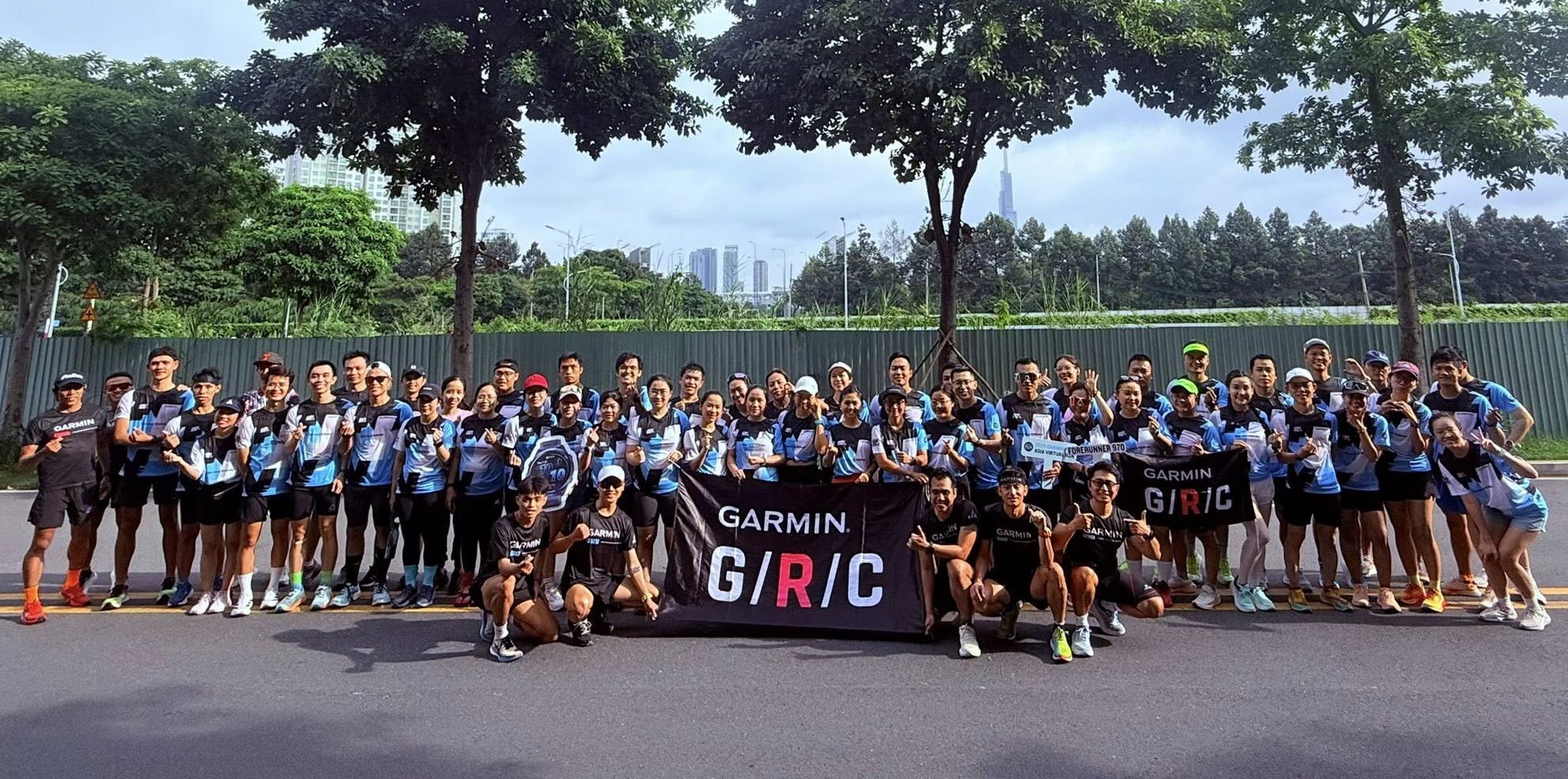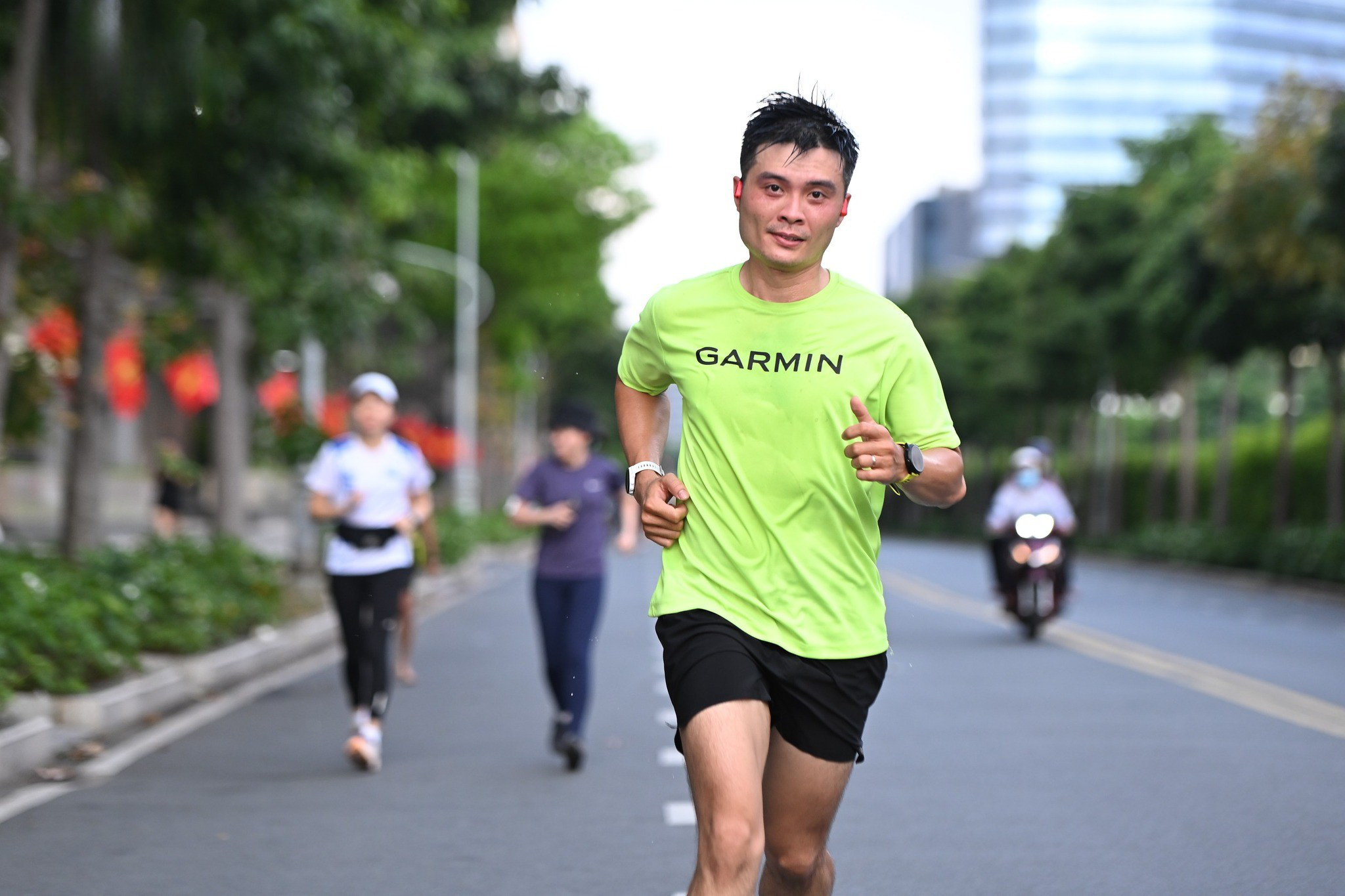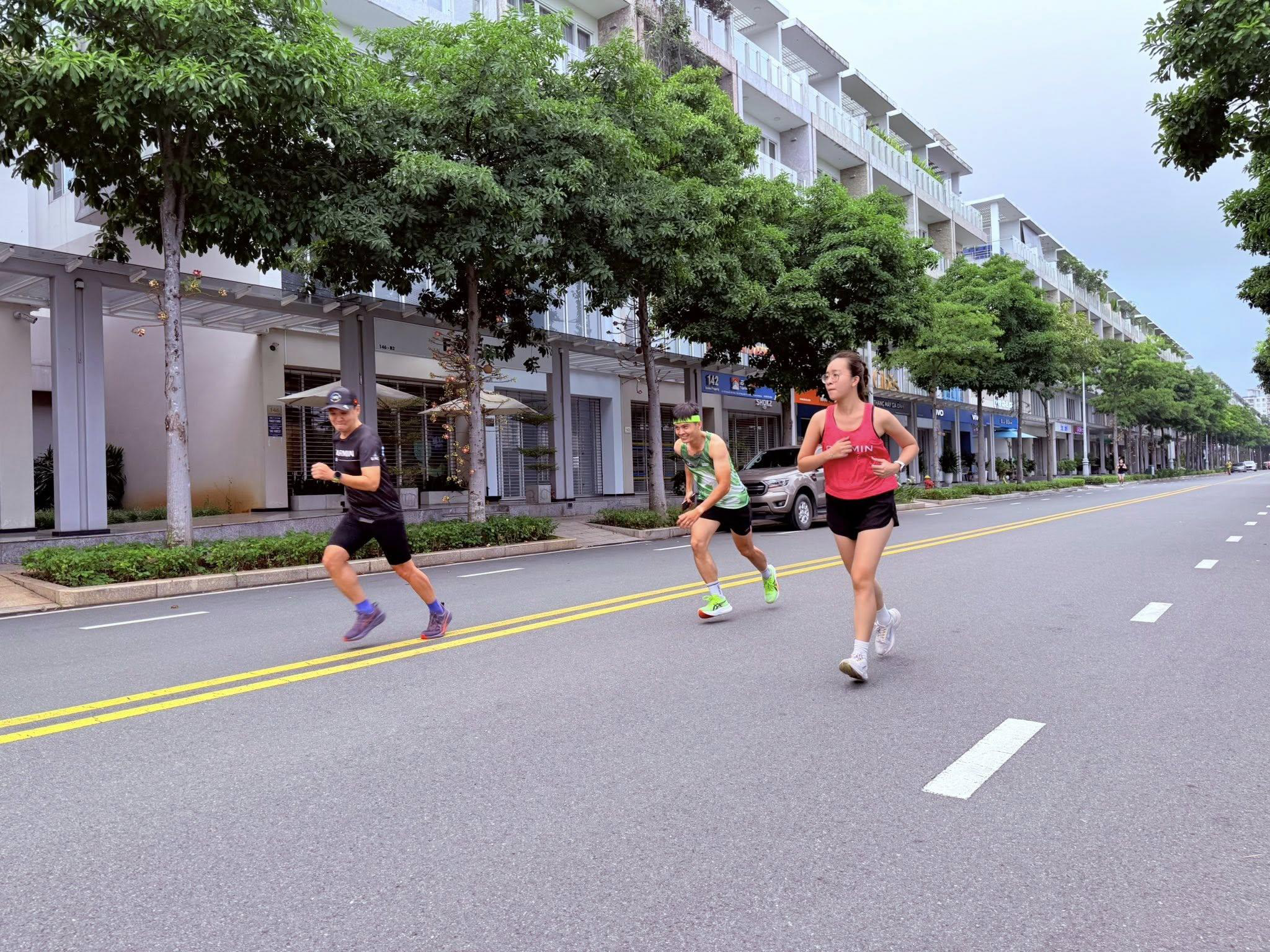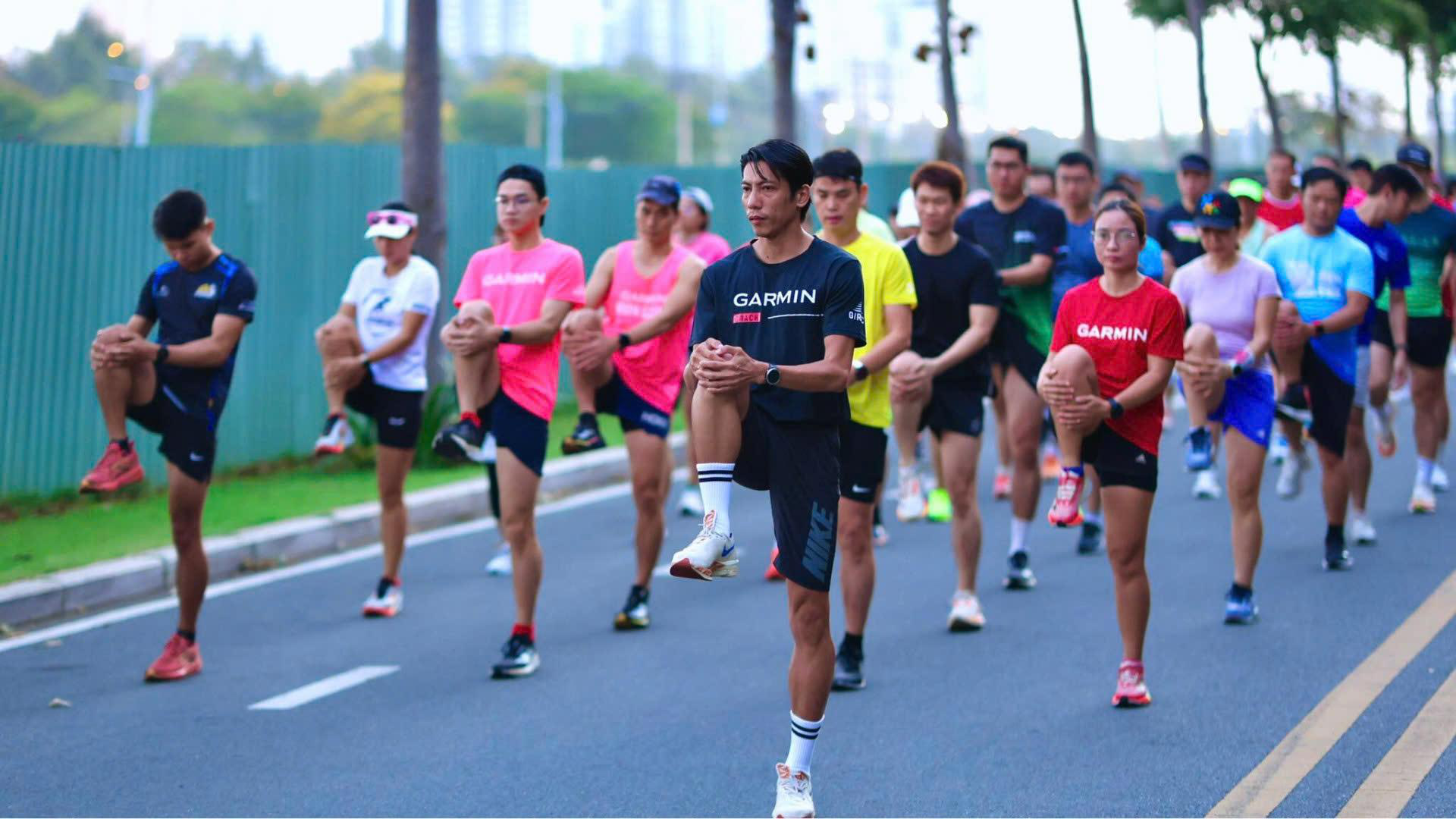Le Bui Qui Nhan, born in 1990, was accustomed to a sedentary office life. After a long day at work, he had little energy left for exercise. All he wanted to do was relax at home. Late in 2024, while visiting the Thu Thiem area, he saw dozens of runners from the Garmin Run Club (GRC) training, running together and chatting along the way. This sight inspired him to make a change.
 |
Members of the Garmin Run Club. Photo: GRC |
Members of the Garmin Run Club. Photo: GRC
"I was impressed by their energy. It was at that moment I wanted to try running," he said.
But the reality was different from the inspiring images he saw online. In the beginning, he trained alone near his home, running instinctively without warming up or stretching, leading to fatigue. After two weeks, he wanted to quit because he was too tired for his daily routine. "Maybe running isn't for me?" he wondered.
Nhan also felt overwhelmed by conflicting advice. "Some people said to land on the balls of my feet, others said on my heels. Some said running could cause strokes or muscle atrophy. I didn't know where to begin or who to trust," he shared.
His running journey took a turn for the better when he decided to meet with GRC members for advice. He joined the group and received coaching from the beginning. They assessed his running form through small tests to identify technical errors and then guided him on how to correct them. "From then on, I understood that running is a science, not just a whim," Nhan said.
 |
Nhan training at Sala. Photo: NVCC |
Nhan training at Sala. Photo: NVCC
His daily schedule completely changed. He woke up earlier, did supplemental exercises, ran with a purpose, and rested properly. He maintained this routine every day. In less than six months, he went from struggling to run 1 km to running 24 km without stopping. His personal best is 22 minutes 12 seconds for a 5 km run.
Besides the coach's guidance, his Garmin watch became a silent companion throughout his journey, from suggesting daily workouts to tracking his sleep, heart rate, and recovery levels. He said the data helped him understand his body's condition, strengths, areas for improvement, and what to do next.
Beyond athletic progress, Nhan has gained energy and a new outlook on life. "I've become more patient and determined. I'm also more confident in social situations, no longer afraid of crowds like before, and have made valuable connections within the running community," he said.
Another newcomer, Le Thao Nhu, born in 2002, started running less than six months ago to improve her physical and mental health. Like Nhan, Nhu chose to train with GRC every Saturday morning. She finds running relaxing and admits she would struggle to maintain the habit without the group's motivation.
Even when she was running at a 9-10 minute/km pace or even walking in the beginning, the other members encouraged her and waited at the finish line. "The atmosphere was supportive and fun, so I've been able to keep it up," she said.
 |
Nhu running. Photo: NVCC |
Nhu running. Photo: NVCC
Nhu admitted that her biggest obstacle was her physical condition: leg pain, easy fatigue, and weak breathing. However, after each run, she felt happy and her mood improved significantly. A milestone for her was her first social run with GRC, where she completed 10 km at an 8:11 minute/km pace without stopping. Nhu explained that she doesn't run to become an athlete but to enjoy herself, find joy, and gain motivation for life.
Like Nhan, Nhu initially struggled with her running technique, posture, warming up, and stretching. Scientific guidance from coaches and data from their watches helped both of them adjust and stay motivated.
The watch provides workout suggestions based on activity history, tracks menstrual cycles and stress levels, and offers rest recommendations. "Sometimes my Garmin is like a fitness coach. Thanks to the heart rate data, I know when to push myself and when to take it easy," Nhu said.
Nhan and Nhu are among many new runners joining the running community every year. While there are no official statistics, running clubs report attracting 1,000-2,000 new online members and 100-200 new in-person trainees annually. Many others choose to train independently.
Running at a moderate pace offers numerous health benefits: improved fitness and mood, and reduced risk of heart disease and stroke. However, running alone can lead to a loss of motivation. Lack of knowledge, following trends without proper guidance, or the absence of scientific training can also make new runners feel tired, discouraged, and even prone to injuries.
Experts advise that running should start with small steps, appropriate to one's physical condition, and with proper monitoring. Joining reputable running communities and using devices capable of analyzing personal data, such as sports watches, can help new runners stay on track. Features like heart rate zone tracking, HRV variability, stress level monitoring, sleep quality analysis, and personalized workout suggestions can provide a structured approach, maintain motivation, and minimize injuries.
 |
A GRC training session. Photo: GRC |
A GRC training session. Photo: GRC
This explains why more people are joining sports communities and using technology to track their progress. A 2017 study published in the Journal of the American Osteopathic Association found that having a running companion improves both physical and mental health, stabilizes emotions, and significantly reduces stress levels. Research at Kansas State University (USA) shows that group exercise can increase intensity by up to 200%.
Nhan, Nhu, and thousands of other new runners are gradually discovering themselves through each training session. With the right guidance and tools, running is no longer a burden but a source of self-renewal – physically, mentally, and in terms of lifestyle.
Many experts agree that runners don't need to start with fast speeds or long distances. A little bit each day can bring you closer to a better version of yourself.
Hoai Phuong












